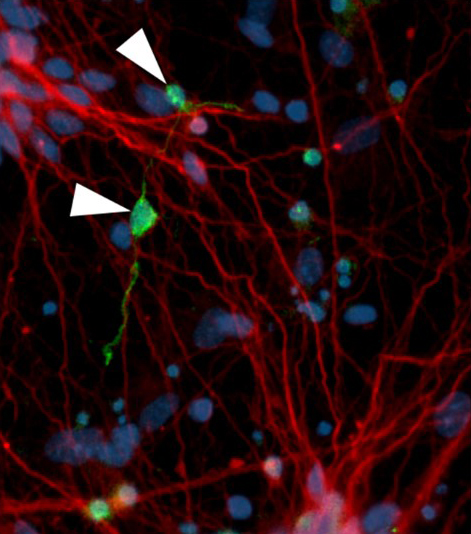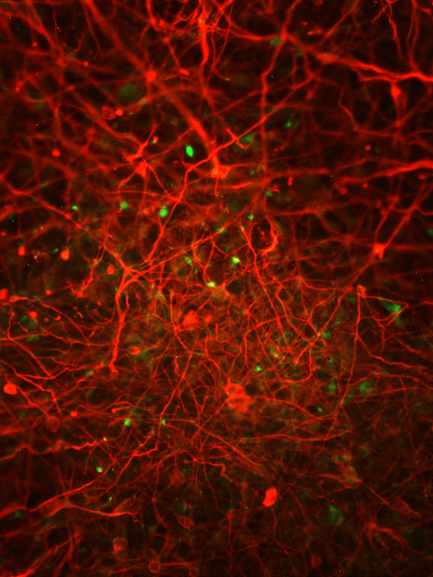New research from the Australian Institute for Bioengineering and Nanotechnology at the University of Queensland has brought us a step closer to understanding how protein clumps called amyloid plaques contribute to the death of brain cells in Alzheimer’s disease.

Images by D Ovchinnikov
The research, published in the highly regarded journal Stem Cell Reports, shows that an increased production of plaques surprisingly does not lead to an increase in brain cell (neuron) death, suggesting that they don’t kill neurons directly or, if they do, they don’t work alone.
Currently, Alzheimer’s disease effects around a quarter of a million Australians, accounting for more than two-thirds of all dementia cases.
One of the major hallmarks of Alzheimer’s disease is the accumulation of the so-called “beta-amyloid plaques”. These plaques are formed when a type of protein in the brain, called amyloid precursor protein (APP), is broken down into smaller fragments. These fragments, which are called beta-amyloid, then clump together to form plaques.
It is widely thought that these amyloid plaques contribute to the death of neurons in people with Alzheimer’s, either directly, or by causing another protein, called tau, to form toxic “neurofibrillary” tangles. Thus, reducing amyloid plaques has been the focus of many efforts to treat the condition.
To get a better understanding of the role APP and amyloid plaques play in neuron death, AIBN researcher Professor Ernst Wolvetang and colleagues used stem cells from people with Down syndrome because they generally develop early onset Alzheimer’s disease.
“People with Down syndrome have an extra copy of chromosome 21, and therefore carry an extra copy of the amyloid precursor protein (APP) gene,” says lead author Dr Dmitry Ovchinnikov.

Images by D Ovchinnikov
The researchers were able to grow neurons from the Down syndrome stem cells and then used the gene editing tool CRISPR to manipulate levels of this protein in these neurons.
This allowed them to show that increased levels of APP are indeed responsible for increased clumps of beta-amyloid. However, to their surprise, this did not cause an increase in neuronal cell death or in numbers of observed toxic tangles of tau.
“Our data challenges the current dogma in the field that amyloid plaques are sufficient to cause neurodegenerative changes associated with Alzheimer’s disease,” Professor Wolvetang said.
“The research highlights that human stem cell-based disease modelling in the dish can provide new insights into the molecular mechanisms that conspire to cause Alzheimer’s disease”, he continued, “and, excitingly, this now opens the way for drug screening.”
The study was conducted in collaboration with researchers at the University of Melbourne with financial support from the NH&MRC and the ARC SRI Stem Cells Australia.
Media: Professor Ernst Wolvetang +61 7 334 63894 e.wolvetang@uq.edu.au; communications@aibn.uq.edu.au


